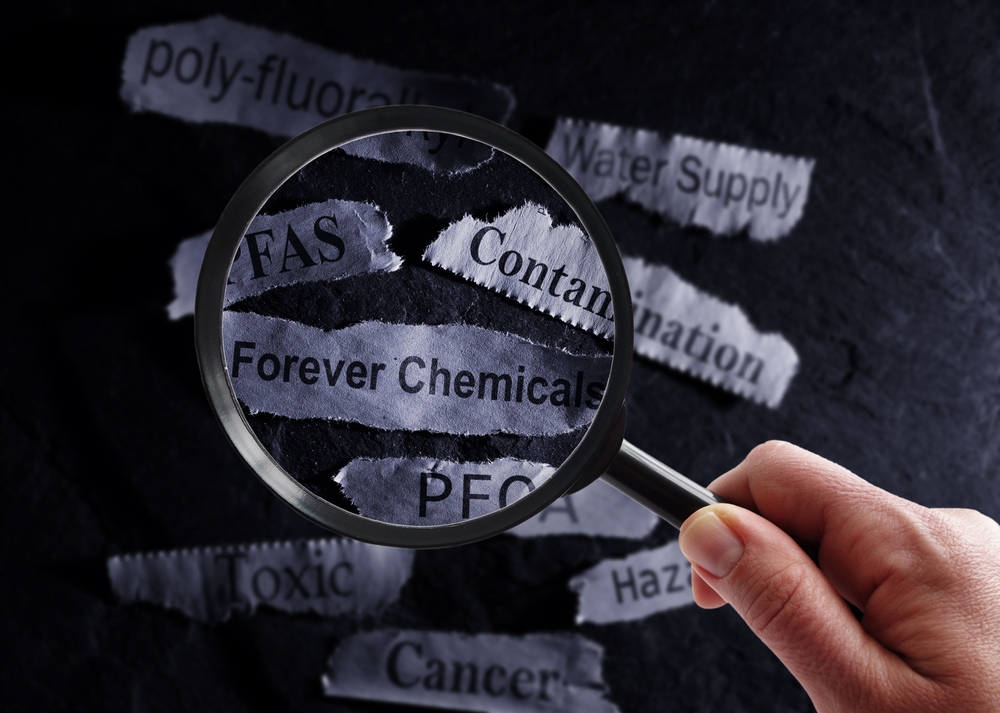

The presence of per- and poly-fluoroalkyl substances (PFAS) in water sources has raised significant concerns due to their persistence in the environment and potential health risks. These chemicals, often referred to as “forever chemicals,” are difficult to remove and can have long-lasting effects on both human health and ecosystems. In this article, we will explore what PFAS are, the dangers they pose, and how various filtration methods, including advanced technologies, can effectively reduce PFAS levels in water with Caware’s total PFAS reduction technology.

PFAS are a group of synthetic chemicals that include perfluorooctanoic acid (PFOA) and perfluorooctane sulfonate (PFOS), among others. These substances have been used in a variety of industrial and consumer products for decades, including non-stick cookware, water-repellent clothing, and firefighting foams. PFAS are highly resistant to heat, water, and oil, which has made them valuable in many applications but also incredibly persistent in the environment.
The health risks associated with PFAS contamination are significant. Studies have linked exposure to PFAS to various health issues, including liver damage, thyroid disease, decreased fertility, developmental effects in fetuses and infants, increased risk of certain cancers, and compromised immune system function. Because PFAS can accumulate in the body over time, even low levels of exposure can be harmful. The pervasive nature of PFAS means that almost everyone has some level of these chemicals in their body, making it a widespread public health issue.
In the environment, PFAS are equally troubling. These chemicals do not break down easily and can travel long distances through water, air, and soil. They contaminate drinking water supplies, accumulate in wildlife, and have been found in remote locations far from any known sources of pollution. The persistence of PFAS in the environment means that they can continue to pose risks for many years, making their removal from water sources a critical public health priority. Additionally, PFAS contamination can have cascading effects on ecosystems, affecting biodiversity and disrupting food chains, which further underscores the importance of addressing this issue.
Effective removal of PFAS and PFOA from water requires specialized filtration methods. Below, we discuss several proven technologies that can reduce or eliminate these contaminants from drinking water.
– Mechanism: Activated carbon filters work through adsorption, where PFAS molecules adhere to the surface of the carbon material. The carbon block’s porous structure provides a large surface area for trapping these contaminants.
-Effectiveness: Activated carbon is particularly effective at removing long-chain PFAS compounds like PFOA and PFOS. However, to maintain its effectiveness, the filter must be replaced regularly as it becomes saturated.
– Usage: Activated carbon filters are commonly used in household water filtration systems, as well as in larger municipal water treatment facilities.
– Mechanism: Ion exchange filters use resins to replace harmful PFAS ions in the water with less harmful ions, effectively removing the contaminants.
– Effectiveness: Ion exchange is effective across a range of PFAS compounds, particularly for short-chain PFAS, which are more challenging to remove with other methods.
– Usage: This technology is used in both residential and industrial settings, offering versatility in its application.
– Mechanism: Reverse osmosis systems force water through a semi-permeable membrane that blocks contaminants, including PFAS, from passing through.
– Effectiveness: RO is highly effective at removing PFAS from water, including both long-chain and short-chain varieties. However, it may struggle with very small PFAS molecules without additional filtration stages.
– Usage: RO is used in residential water systems and in industries that require ultra-pure water, such as pharmaceuticals and electronics manufacturing.
– Mechanism: Similar to activated carbon block filters, GAC filters adsorb PFAS through a process where contaminants stick to the surface of the granular carbon material.
– Effectiveness: GAC filters are broadly effective at removing a range of PFAS compounds but require regular maintenance to ensure continued efficacy.
– Usage: GAC is commonly found in point-of-use water filters and larger municipal water treatment systems.
– Mechanism: Anion exchange resins are specifically designed to target negatively charged PFAS compounds, replacing them with harmless anions in the water.
– Effectiveness: This method is particularly effective for anionic PFAS and offers the advantage of resin regeneration, which can extend the life of the filtration system.
– Usage: Anion exchange is suitable for both residential applications and larger industrial uses where high levels of PFAS contamination are present.
Given the variety of filtration methods available, it’s important to choose the right type of water filter for PFAS removal based on specific needs and conditions.
– Activated Carbon Block: Highly effective for long-chain PFAS but requires frequent replacement.
– Ion Exchange: Versatile and effective across different PFAS compounds, with options for resin regeneration.
– Reverse Osmosis (RO): Excellent for comprehensive PFAS removal, especially in high-purity applications.
– Granular Activated Carbon (GAC): Broadly effective but needs regular maintenance.
– Anion Exchange: Efficient for anionic PFAS, with sustainable resin options.
Notably, when selecting a water filter for PFAS removal, it’s crucial to ensure that the product is certified for this specific purpose. Certification by independent organizations, such as NSF International, assures that the filter meets rigorous standards for contaminant removal, ensuring safety and reliability. Without proper certification, there’s no guarantee that the filter will effectively reduce PFAS levels, which could leave consumers unknowingly exposed to these harmful chemicals.
Our advanced PFAS filtration technology represents a significant leap forward in the fight against water contamination. By combining multiple filtration methods, including RO, and specialized adsorption materials, our systems achieve Total PFAS Reduction—an industry-leading standard.
We are proud to be one of the only manufacturers in Asia with certification for Total PFAS Reduction (NSF/ANSI 53-2023). This certification confirms the effectiveness of our filtration systems in removing virtually all PFAS from water, providing unparalleled protection for consumers. Our commitment to achieving this high level of certification reflects our dedication to offering only the best and most reliable water purification solutions on the market.
Our advanced filtration systems stand out in the market due to their exceptional efficiency and environmental responsibility. Leveraging cutting-edge micro-filtration technology, our systems remove not only the entire PFAS family, including PFOA, PFOS, and PFXS, but also additional harmful substances like VOCs, chlorine, microplastics, cysts, and heavy metals such as lead. This comprehensive contaminant removal is a direct result of our integrated multi-stage design, which utilizes a patented single-module system, simplifying the filtration process and significantly reducing maintenance requirements.
Furthermore, our commitment to sustainability sets us apart. Our systems use eco-friendly, FDA-compliant materials that are fully recyclable and halogen-free, ensuring zero environmental impact during disposal. This focus on environmentally responsible engineering offers peace of mind to consumers and businesses alike. Designed for adaptability, our filtration systems can be easily customized to suit diverse applications—from residential homes seeking clean drinking water to large-scale industrial operations requiring high-level purification. This versatility, combined with superior contaminant removal and sustainability, makes our product the ideal choice for those prioritizing both performance and ecological responsibility.
In healthcare settings, the quality of water is paramount. Contaminated water can lead to infections, complicated medical procedures, and violate health regulations. Medical-grade water filtration systems are essential to ensure that water used in hospitals and clinics is clean, safe, and compliant with stringent health standards.
– Ultrafiltration (UF): Removes bacteria, viruses, and pathogens, providing a high level of disinfection without the use of chemicals.
– Reverse Osmosis (RO): Offers top-tier purification, making it ideal for sterilization and critical patient care applications.
– UV Disinfection: Inactivates pathogens using ultraviolet light, ensuring chemical-free water treatment.
– Multi-Stage Filtration: Combines various technologies to provide comprehensive contaminant removal, ensuring the highest water quality.
Our medical water filtration systems meet FDA, ISO, and PFAS-specific standards, ensuring their effectiveness and safety in healthcare environments. These certifications are critical, not just for compliance, but for ensuring that the water used in patient care and medical procedures is of the highest possible standard, protecting both patients and healthcare professionals.
To explore our advanced PFAS water filters and learn more about how they can protect your health and the environment, visit our website. Discover the right filtration solution for your needs and ensure your water is as clean and safe as possible.